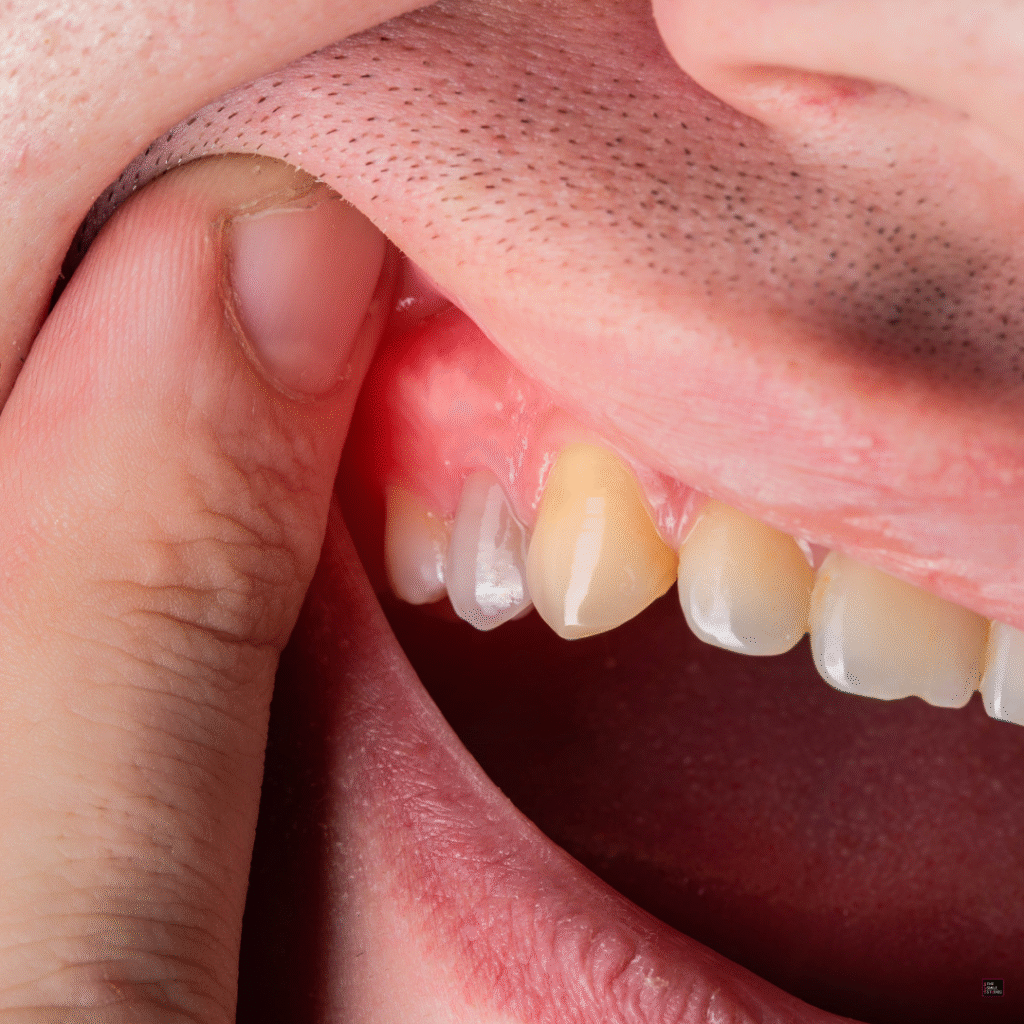07 May 2025
Can Gum Disease Be Reversed?
One of the questions our patients ask us the most often is ‘Can gum disease be reversed? And what are my options after being diagnosed with gum disease?’
Here’s the bad news first – gum disease can’t be reversed.
It’s a progressive condition that will not mend itself with time.
Now here’s the good news – the effects gum disease has on your health can be treated, and if you do lose teeth to gum disease, there are plenty of options out there to suit a range of needs and budgets.

The manner in which gum disease is treated depends on:
- How much it has progressed
- The symptoms you are displaying
Treating early-stage gum disease (gingivitis)
Gingivitis is the early onset of gum disease, and at this stage, it can be reversed.
Generally, a routine cleaning (sometimes several sessions are needed) with the hygienist will reverse gum disease, along with a consistent at-home oral hygiene routine. Your hygienist will remove the plaque causing the minor inflammation to your gums, reversing symptoms such as bleeding gums, red and swollen gums, and bad breath.
Once the plaque is no longer present, you can protect your gums from further risk of developing gum disease by:
- Flossing at least once a day – flossing removes the bits of food that create the harmful by-product, plaque.
- Limiting your sugar to the same times each day – in an ideal world, none of us would eat sugar! If you can though, limit your sugar to the same time each day. It’s not the amount of sugar that causes plaque to build up, but the regularity at which you consume it. The more times your mouth has to endure sugar; the more plaque will build up.
- Drink plenty of water – sipping on water after eating helps to rinse away acids in your mouth.
Treating advanced gum disease (periodontitis)
If you have been diagnosed with periodontitis, you will have sustained some severe debilitating symptoms, perhaps including loose teeth, changes to how your teeth bite together, and deep plaque, and tartar (calcified plaque that is yellow/white in shade) staining.
Whilst at this stage your gums will not self-heal, the condition is treatable with certain treatments:
- Surgical treatment – gum disease creates pockets in your gums, allowing plaque to reach the surface underneath the gums. Once plaque attacked your tooth roots, this can seriously start to compromise your tooth, causing infections. Your hygienist can perform a treatment called root planing and debriding to remove the plaque from the tooth roots, preventing it from damaging the tooth even further. Your dentist will work to reduce the pockets of space between your teeth and the gums. These pockets can otherwise provide a direct route for plaque to enter the bloodstream, becoming arterial plaque and increasing your risk of heart disease and heart attacks.
- Gum recession treatment – periodontitis eats away at your gum tissue and can eventually cause the gums to pull away from the teeth. This leaves your teeth looking longer, and more vulnerable to tooth decay. When gum tissue is lost, the fragile dentine structure underneath the gums is exposed to the acid attacks that occur in the mouth on a daily basis.
- Personalised oral hygiene plan – once the treatment to reverse the severe symptoms has been carried out and your gums are recovering, an oral hygiene plan can be created to help you avoid surgical intervention in the future. Your hygienist and dentist here at The Smile Studios can provide tailored guidance aimed at your own risk factors for gum disease (which differ from patient-to-patient).
What are my options for replacing teeth lost to gum disease?
In some cases, it is necessary to remove teeth that have become loose as a result of gum disease. Leaving them present in the mouth can increase your risk of severe health conditions. Eating can also become extremely challenging (and even painful) when loose teeth are left untreated.
At The Smile Studios, we use the latest visual technologies to show patients why it is deemed clinically appropriate to perform extractions. We will only ever perform extractions once a comprehensive diagnosis has taken place, and where there is overwhelming evidence that the tooth cannot be saved and is actively contributing to damaging your health.
We offer a range of options for replacing teeth lost to gum disease, as well as 0% finance to help you spread the cost of treatment should you wish to. These include:
Dental implants) The gold standard in tooth replacement. Implants replace the whole of a failing tooth root, and a crown, bridge or denture can be placed over the top. Dental implants are the only treatment that can replace an entire tooth root, and they are fully biocompatible when the underlying bone, making them the closest solution to a real tooth.
Dentures) Removable teeth that sit over the top of your gums. Suction holds them in place. Dentures are a cost-effective solution for a large number of missing teeth (or if you have lost all of your teeth).
Bridges) A dental restoration made up of crowns that hold a false tooth in the gap. The crowns are placed over the top of the teeth either side of the gap, providing support for the false tooth to sit firmly in the gap.
Contact a dentist in Palmer’s Green
If you are concerned about gum disease, or you are seeking a dentist for routine hygienist appointments, we encourage you to give us a call. You do not have to take up any suggested treatment offered to you should you not wish to, and our hygienists will offer transparent guidance, and respect your decision to proceed or consider your options.
Back to Blog